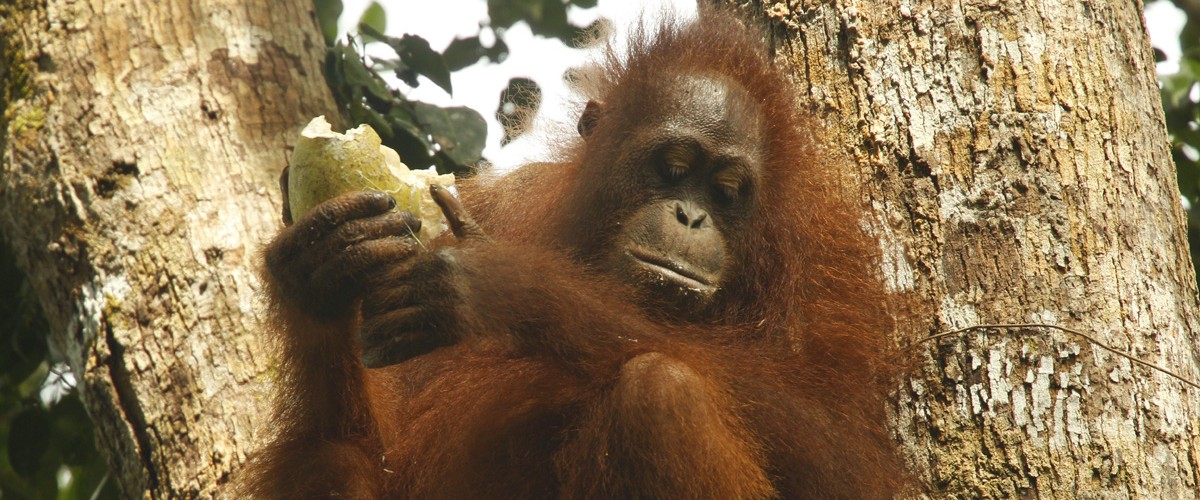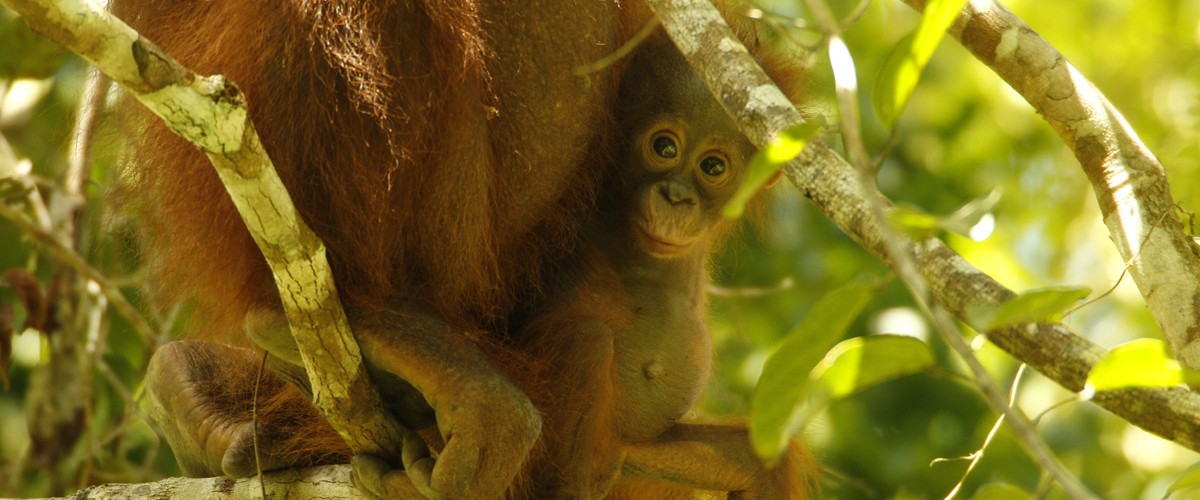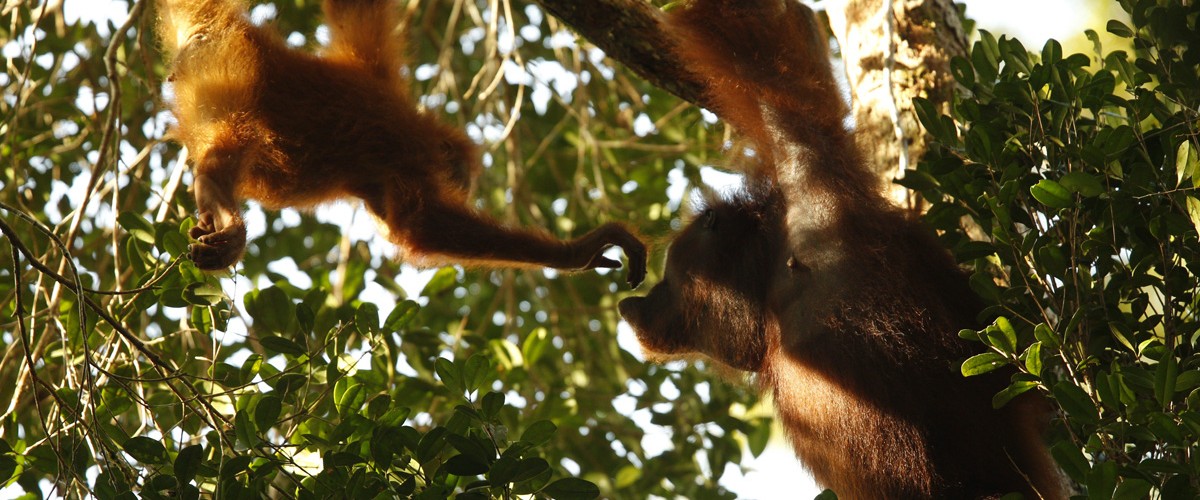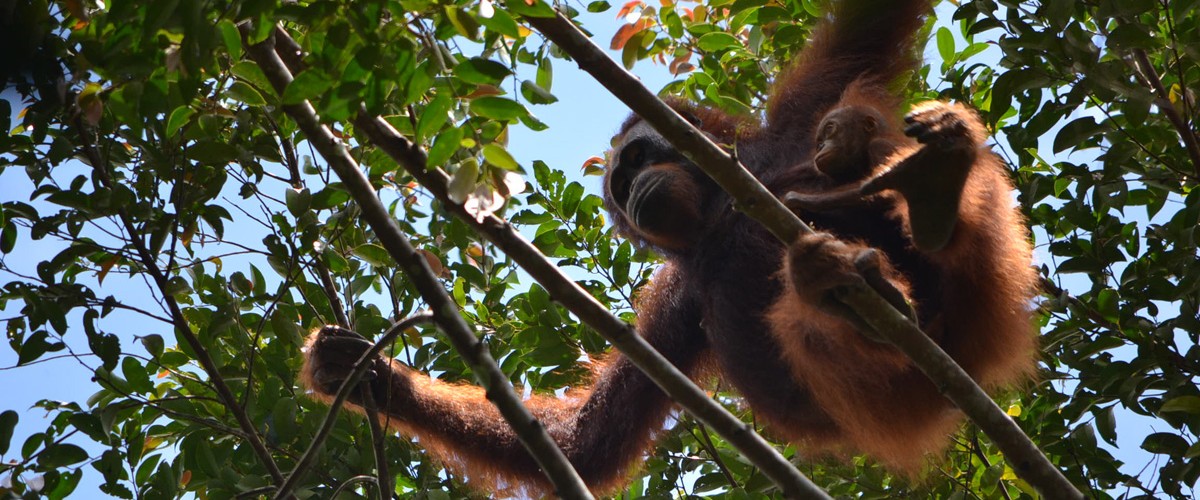By Cheryl D Knott, PhD, Executive Director, Professor, Boston University
As the human world struggles with the global COVID-19 pandemic, we perhaps can learn something from orangutans. Unlike most primates, who are known for their high sociality and group living behavior, orangutans spend the majority of their time alone. What can these semi-solitary apes teach us about the relationship between social distancing and disease?
The human species is now carrying out a world-wide experiment on the impact of social distancing and we can see for ourselves that this stops the spread of disease. As natural social distancers, orangutans seem to have much lower incidences of illness than the African Apes. Our twenty-six years of data on wild orangutans in Gunung Palung National Park show no evidence of respiratory infections or the spread of infectious disease. In fact, there are no documented cases of widespread infection across any population of wild orangutans. This is remarkable in light of the respiratory illnesses that have been seen to ravage many African Ape (chimpanzee, bonobo and gorilla) study populations. Recording signs of illness and using field tests to look for signs of disease has been a hallmark of our study since it first started in 1994. But, we just don’t see the widespread sneezing, coughing, and runny noses that our colleagues studying chimpanzees, in particular, often witness.
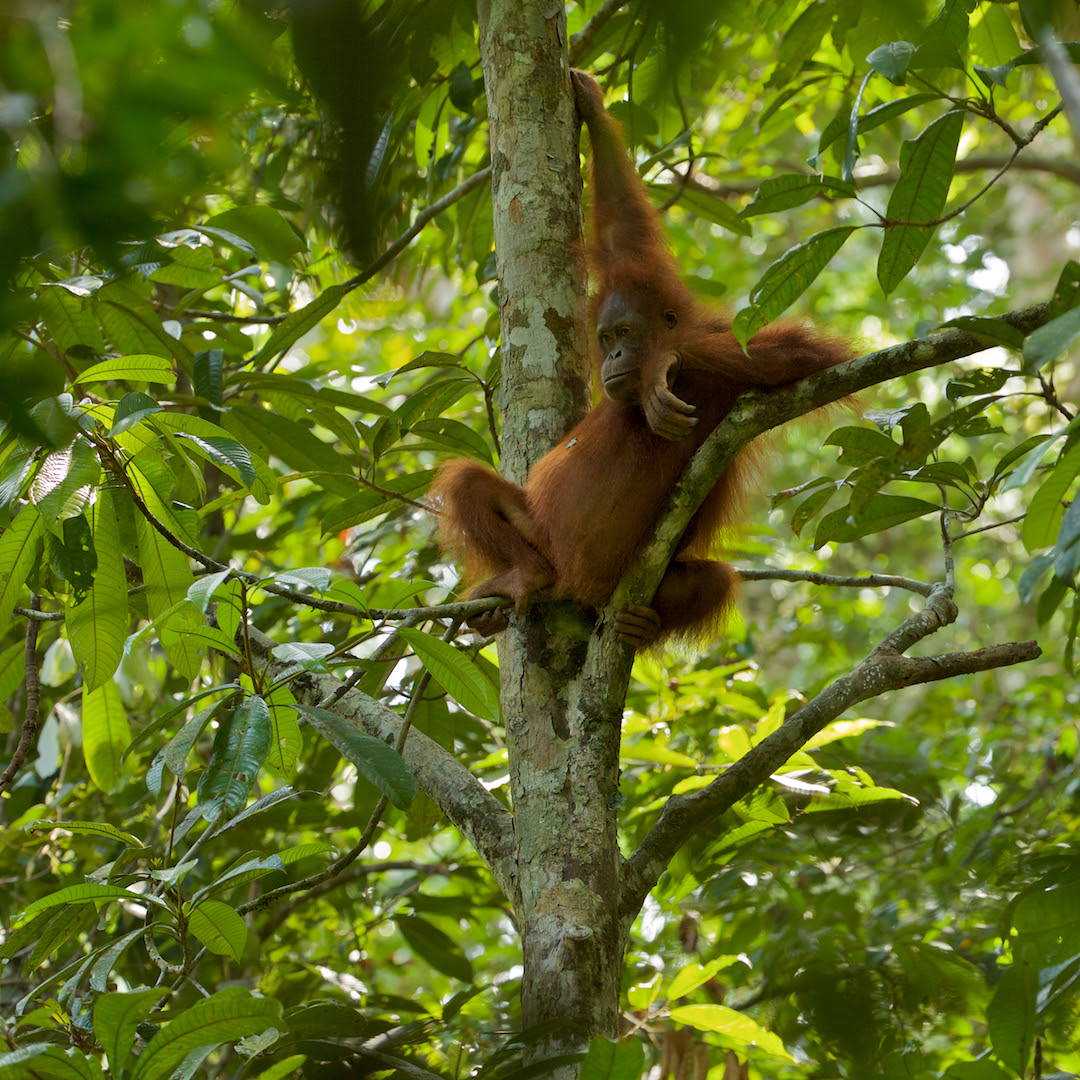
This difference can be attributed, in large part, to the vastly different social systems of orangutans and chimpanzees. Chimpanzees are simply much more social than orangutans. Their fission-fusion social system means that their group size varies, but they spend far less time alone. Chimpanzee subgroups are constantly changing, meaning that individuals, and whatever infections they carry, regularly contact other individuals. In contrast, over the total 26 years of our study at Gunung Palung, orangutans encountered another orangutan on only 25% of the days they were followed. Thus, 75% of the time they were entirely alone. On those days they do have a social interaction, they spend an average of just 40% of their day together at an average distance of 18m (59 feet). Of course, there are some days that they spend the whole day together in close proximity, but other days a social encounter may just be passing by another orangutan who is 50m (164 feet) away! For orangutans, we consider that to be a ‘social’ interaction. Chimpanzees, on the other hand, not only spend more time together, but they can spend several hours a day grooming each other in close bodily contact. In contrast, we’ve never witnessed adult orangutans grooming each other!
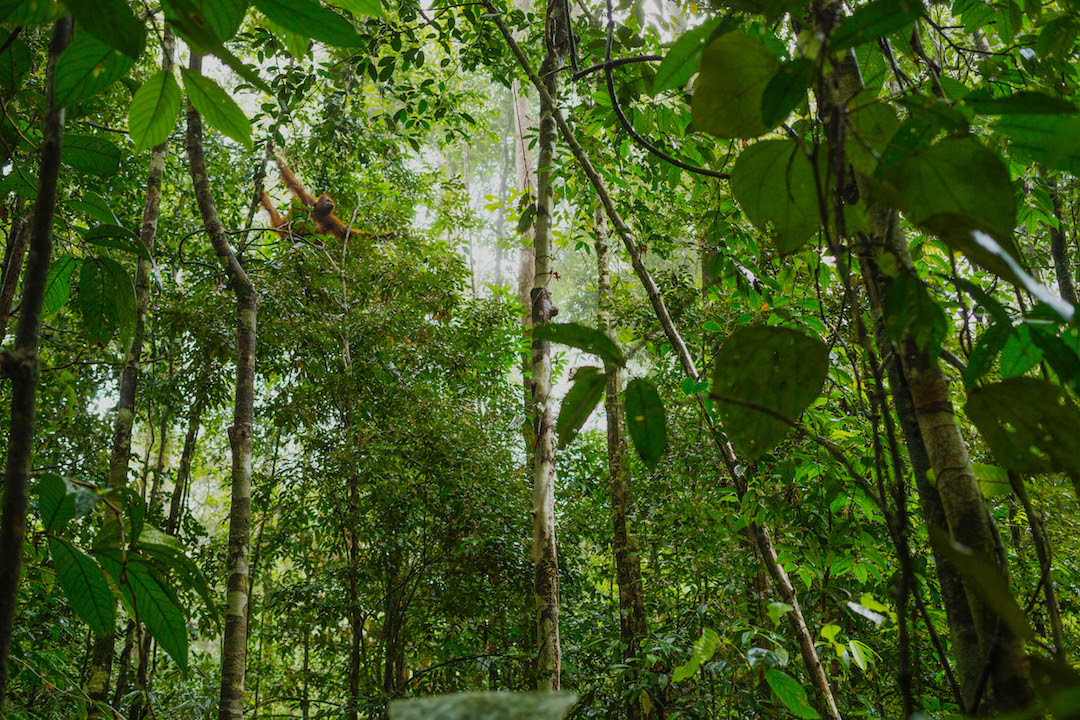
This kind of ‘social distancing’ in orangutans means that infectious disease has little chance of taking hold in orangutans. In fact, this was recently modeled in a paper by Carne et al. (2014) that looked at the projected impact of the social system on the spread of respiratory disease in chimpanzees and orangutans. They found that orangutans had a very low probability of spreading disease, even if it was highly infectious. Chimpanzees, on the other hand, showed a high degree of vulnerability to infectious respiratory diseases. These findings are borne out by the experiences of researchers studying both species in the wild.
Contributing to the lack of infectious disease transfer from humans to orangutans in the wild is that orangutans’ arboreal nature also helps separate them from people. The average height in the tree canopy of orangutans at Gunung Palung is 20m (about 66 feet), which means that the distance between them and human observers is usually at least 30 m (98 feet). The current recommendation from the IUCN SSC Wildlife Health Specialist Group and the Primate Special Group, Section on Great Apes is to keep 10m away from apes to eliminate any possibility of the spread of disease. Additionally, disease can spread through contact with surfaces, and the much greater terrestrial movement of the African apes, as well as captive or rehabilitant orangutans, increases the potential for disease transmission. Across all of our data, orangutans at Gunung Palung have been seen to come to the ground in our presence less than 1% of the time. If they do come to the ground, they spend only about 8% of their time there. In addition, orangutan arboreal behavior in Borneo may be particularly pronounced at Gunung Palung because our primary forest structure, with taller trees, likely contributes to higher average height, and less time on the ground for orangutans compared to many other sites.
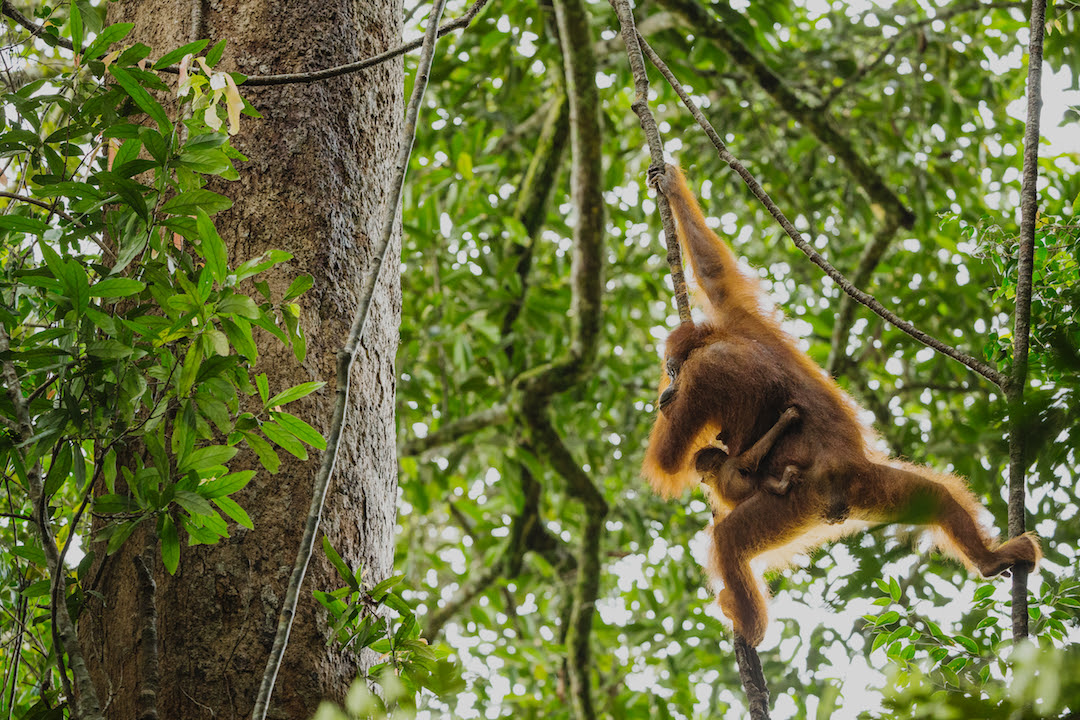
Although the natural social distancing that is characteristic of orangutans explains their low incidence of disease, it doesn’t mean that they are immune to such infections if conditions become crowded or if they have closer contact with humans. In zoos and rehabilitation centers they do get respiratory infections. Thus, precautions are regularly taken when contacting the animals in these facilities. Most of the rehabilitant and rescue centers have stopped tourism for now and limited the number of staff that are in contact with the animals. These are important and reasonable measures. All the great apes are closely related to humans, and thus if they do get in close contact with us, there is a high likelihood that they might suffer from the same diseases we do.

Even if the likelihood of disease transfer is extremely low in the wild, we at GPOCP remain vigilant to any impact we may have on wild orangutans. Thus, we are continuing to make sure that we maintain this average 30m distance separation from the animals and that only essential staff are allowed to follow them. Our location at Cabang Panti Research Station is relatively isolated with little human traffic in and out. As with communities elsewhere, we have instituted increased attention to hand washing, use of hand sanitizer, and social distancing. We are making sure, for the health of both orangutans and people, that anyone with a fever or sickness doesn’t come to the field station and follows a two week quarantine in their home village if they show any sign of illness. We care deeply about ensuring the safety of our staff and are making sure everyone is well rested and staying healthy. As we all continue our practice of social distancing around the globe I can’t help but feel that the world is becoming a little more like the orangutan – the person of the forest.
